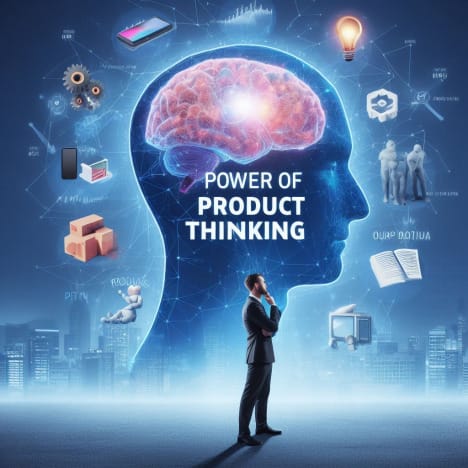Product-led growth (PLG) has changed the way companies delight customers. In this new business strategy, the product itself becomes the driver of user acquisition, conversion, and expansion, creating a seamless and value-driven experience that propels business growth.
The product manager stands at the heart of this approach, a pivotal persona who orchestrates the balance between user needs and business objectives. Product managers are the unsung heroes driving innovation and user adoption in a PLG environment. In 2023, Glassdoor ranked the product manager position as the 4th best job in the United States. As the architects of product strategy and user experience, PLG product managers have influence over a company's trajectory, making their toolkit not just a set of resources, but a factor in achieving business success.
I've witnessed firsthand the challenges and successes of product teams striving to create exceptional user experiences. I want to share insights into the essential toolkit that every PLG product manager needs to excel in their role and drive sustainable growth.
The five pillars of PLG success
To thrive in a product-led environment, product managers need a robust set of internal tools that support every stage of the product management lifecycle. Let's explore the five critical components of this toolkit:
1. User onboarding: The first impression that lasts
Product managers require a comprehensive product onboarding platform to cover all phases of a user's experience. This tool should be able to cover the following scenarios:
- Guide new users through their initial experience;
- Highlight key features and demonstrate value quickly;
- Adapt to different user personas and use cases; and
- Provide interactive tutorials and tooltips.
Investing in a powerful onboarding solution ensures that users don't just sign up, but instead become engaged, active participants in your product development lifecycle.
2. Product analytics: Data-driven decision making
In the world of PLG, gut feelings aren't enough. Product analytics tools are essential for tracking user behavior and engagement metrics, identifying friction points in the user journey, measuring feature adoption rates, and monitoring churn indicators and retention metrics. With these insights, PMs can make informed decisions, prioritize effectively, and optimize the user experience based on real data.
3. Product communication: Building bridges with users
Clear, timely, and targeted communication is the lifeline between your product and its users. In my opinion, a robust product communication tool should offer in-app messaging capabilities, segmentation for personalized updates, a centralized platform for gathering and organizing user feedback, and analytics to measure the impact of your communications. By keeping users informed and involved, you create a sense of community and continuous improvement around your product.
4. Collaboration and project management: Staying aligned in a fast-paced work environment
As your product and team grow, so does the complexity of managing workflows. An effective task management tool should scale with your organization, facilitate cross-functional collaboration, provide visibility into project progress, and integrate with your existing technology stack. The right task management solution keeps your team aligned, agile, and focused on delivering value to users and creating a transparent collaboration across the organization.
5. Feature flagging and experimentation: Iterating with confidence
In a PLG environment, the ability to rapidly test and refine features is crucial. Feature flagging and experimentation tools allow product managers to:
- Selectively release new features to specific user segments;
- Conduct A/B tests to compare feature variations;
- Measure the real-time impact of changes on user behavior and business metrics;
- Quickly disable or roll back features if issues arise;
- Accelerate the deployment of validated features to all users.
An effective feature flagging and experimentation strategy should offer granular user targeting, integrate with existing analytics tools, and provide intuitive interfaces for both technical and non-technical team members. By incorporating these capabilities, product managers can foster a culture of data-driven decision-making and continuous improvement, ensuring that every product enhancement delivers measurable value to users and the business.
A real-world PLG challenge: Improving the setup experience
To illustrate the importance of this toolkit, let me share a product challenge I’ve faced in my career. After making significant product changes, my team noticed a concerning trend: our new conversion rate was suffering because customers weren't reaching the crucial "setup moment" where they experienced the full value of our product.
While we had access to product analytics, our process was far from optimal. It required manual intervention from our data analysts to identify the issue, pinpoint specific user cohorts that were dropping off, and analyze the root causes of the drop-off. This process was time-consuming, taking 2-3 weeks when it could have been completed in just 1-2 days with the right tools.
Armed with insights from our analysis, we implemented a multi-faceted approach:
- We revamped our user onboarding experience, introducing interactive guides and checklists.
- We created a self-serve resource center to empower users with the information they needed.
- We improved our product communication, providing targeted messages to users at risk of dropping off.
Over six weeks, we saw remarkable results, including a 12-15% reduction in the overall drop-off rate, increased user engagement with key features, and faster time-to-value (TTV) for new users. Specifically, TTV was brought down to 4 hours which helped customers become product qualified leads faster and improved the overall conversion. This experience underscored the critical need for a consolidated toolkit that enables PMs to gain quick insights and take immediate action.
Empowering PLG product managers for future success
As we reflect on my own company’s challenge and its resolution, it's clear that the right set of tools can make all the difference in a PLG environment. By investing in comprehensive solutions for user onboarding, product communication, feature flagging and experimentation, analytics, and task management, product managers can respond rapidly to user needs and market changes, make data-informed decisions that drive growth, create seamless, value-driven user experiences, and foster a culture of continuous improvement and innovation.
PLG product managers need more than just creativity and strategic thinking: They require a toolkit that amplifies their key responsibilities, enabling them to use both qualitative and quantitative data. This toolkit helps bridge the gap between the vast amount of information at their fingertips and actionable insights, empowering them to lead their products to success. As the SaaS industry evolves, our tools are extensions of our product vision. By equipping our teams with the right resources, we're not just building better products; we're creating experiences that users love, champion, and can't live without. That's the true essence of product-led growth.









Comments
Join the community
Sign up for free to share your thoughts